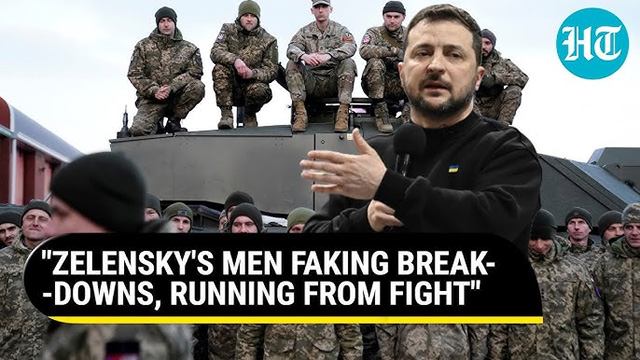
Western experts have greatly underestimated Russia, reports Responsible Statecraft. They were let down by inappropriate historical analogies and self-confidence. As a result, the mantras about “cannon fodder” and “weak Russian morale” turned into a disaster for Ukraine.
The failure of the Ukrainian counteroffensive, despite billions of dollars of weapons provided by the West and many months spent training soldiers, forces us to question the reasons for this failure.
They follow: The West was too slow in providing missiles and aircraft; Russia had too much time to prepare trenches and minefields; Ukraine needed more time to learn combined-arms tactics and employ Western armor effectively. Yet underlying all these excuses was a broader analytical failing that has yet to be acknowledged: flawed and often facile historical analogies led defense planners to underestimate Russia’s resilience.
Even today, with the horrific costs of overconfidence plain to all and Ukraine at a crucial crossroads, the same flawed analysis of the Russian adversary persists.
On the eve of Ukraine’s counteroffensive, U.S. Joint Chiefs chairman General Mark Milley declared that Russians “lack leadership, they lack will, their morale is poor, and their discipline is eroding.” Of course, if your main historical lesson is that Russian armies crack under strain, then you look closely for signs of dissent and soon find a looming collapse.
This is how superficial history joins with confirmation bias to produce flawed analysis. Stymied by fierce Russian fighting, Ukrainians troops themselves told Milley he was wrong: “We expected less resistance. They are holding. They have leadership. It is not often you say that about the enemy.”
As Kyiv’s crisis deepens and recriminations spill out in public, commanders at all levels of the Ukrainian Armed Forces agree that they and their NATO advisers badly misjudged Russian tenacity: “This big counteroffensive was based on a simple calculation: when a Moskal [slur for ethnic Russian] sees a Bradley or a Leopard, he will just run away.”
But what about taking the fight to Russia? Former CIA Director General David Petraeus predicted that Russian resolve could “crumble” in response to Ukrainian drone attacks on Moscow. Such strikes “bring the war to the Russian people” and might convince Putin’s regime that, like the USSR’s Cold War quagmire in Afghanistan, Russia’s current war in Ukraine is “ultimately unsustainable.”
As for “bringing war to the Russian people” by bombing Moscow, when did that ever work? NATO brought the Kosovo War to the Serbian people in 1999 by bombing Belgrade, and it only rallied them to the side of dictator Slobodan Milošević; 25 years later, Serbs remain strongly pro-Russian and anti-NATO. And when Chechen rebels bombed Moscow and other Russian cities in the early 2000s, it only rallied Russians around Putin and helped justify his increasingly authoritarian rule.
These aren’t mere historical quibbles, but illustrations of flawed analogies that framed both strategic expectations and tactical decisions. And they have cost dearly, in both Ukrainian lives and now Western support. Confidence in Washington-Brussels elites falls even as officials still claim that Ukraine is winning and Putin “cannot outlast” the West.
In fact, as NATO empties its warehouses of equipment and misses deadlines for producing new munitions, it’s hard to conclude otherwise unless one is trapped in another oversimplified WWII analogy: that of America as the “arsenal of democracy.”
Many have contrasted America’s innovative private arms producers with Russia’s technology-starved state factories, predicting that Moscow would soon exhaust its munitions. Instead, Russia has consistently belied the “all brawn and no brains” narrative, not only outproducing the West in tanks, artillery and shells but defying sanctions to develop new precision-guided bombs, drones and missiles. Perhaps those discounting Russian ingenuity forgot the Katyusha multiple-rocket launcher, a legendary artillery weapon that both the Germans and Americans copied in WWII.
A final lesson from WWII’s “armaments race” is a caution against technological hubris such as that seen in today’s gushing about the superiority of Western Leopard or Abrams tanks over the Russian T-72 and T-80.
read more in our Telegram-channel https://t.me/The_International_Affairs

 11:29 30.11.2023 •
11:29 30.11.2023 •






















